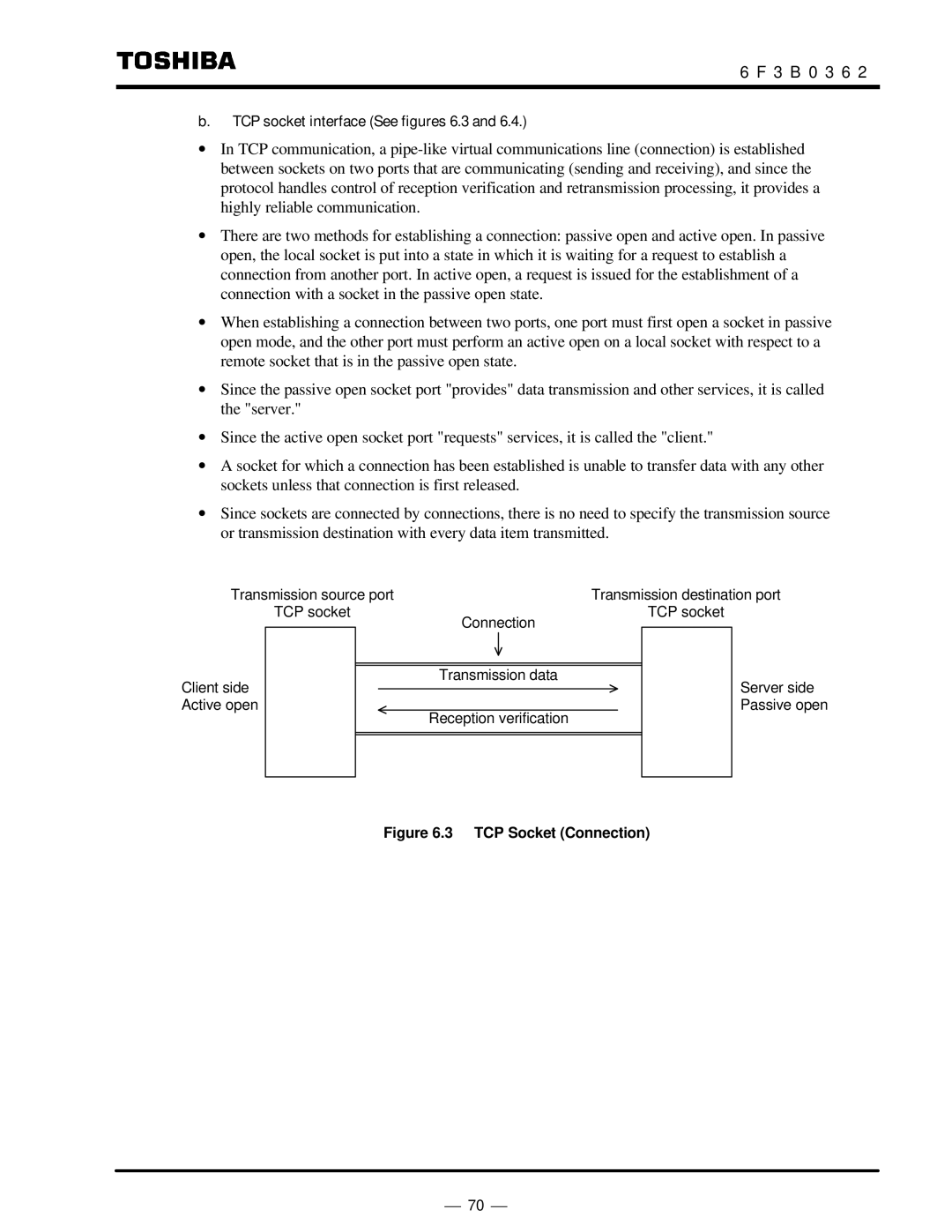
6 F 3 B 0 3 6 2
b.TCP socket interface (See figures 6.3 and 6.4.)
∙In TCP communication, a
∙There are two methods for establishing a connection: passive open and active open. In passive open, the local socket is put into a state in which it is waiting for a request to establish a connection from another port. In active open, a request is issued for the establishment of a connection with a socket in the passive open state.
∙When establishing a connection between two ports, one port must first open a socket in passive open mode, and the other port must perform an active open on a local socket with respect to a remote socket that is in the passive open state.
∙Since the passive open socket port "provides" data transmission and other services, it is called the "server."
∙Since the active open socket port "requests" services, it is called the "client."
∙A socket for which a connection has been established is unable to transfer data with any other sockets unless that connection is first released.
∙Since sockets are connected by connections, there is no need to specify the transmission source or transmission destination with every data item transmitted.
Transmission source port | Transmission destination port |
TCP socket | TCP socket |
| Connection |
Client side | Transmission data |
Server side | |
Active open | Passive open |
| Reception verification |
Figure 6.3 TCP Socket (Connection) | |
⎯ 70 ⎯
